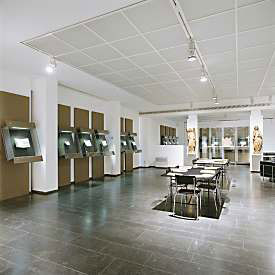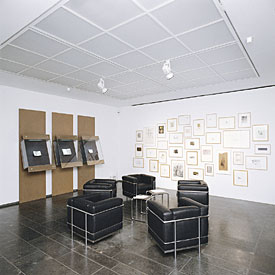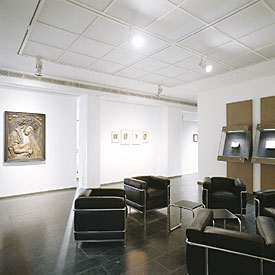2001 ars vivendi
15 December 2001 to 22 May 2002
The art of living – the art of dying
The Manuscript Collection of Renate König
In the high and late Middle Ages, books of hours, breviaries, prayer books, Psalter manuscripts and collections of religious literature belonged to the most precious things brought forth by illumination and the art of book production in Europe’s cultural centres. With their texts intended for repeated daily reading or prayer in certain situations, sometimes connected with the granting of indulgence for the eternal salvation of one’s soul as well as picture stories and depictions of saints, the amusing drolleries of a “topsy-turvy world” and manifold ornaments, these codices, which, for the most part, were easy to handle, were a safe pledge by their owners for success in daily life. Their usage promised all sorts of help for the “art of living right and the art of dying well”. For the first time, this exhibition presents what is presumably the most distinguished collection of these magnificent manuscripts in German private ownership. It includes books which have been commissioned by patrons who remain anonymous as well as books whose texts and decoration have been tailor-made to suit the commissions of high-ranking persons. Excellent examples of book illumination from studios in Paris, Barcelona, Naples, Bruges, Utrecht, London and many other places testify to a cultural phenomenon of European scope. Each individual work was a part of the private life of the respective owner, who could take it in hand any time he wanted as a cornucopia of comfort, hope and enjoyment, enriching it over the course of a lifetime with personal remarks. Thus the 13th to the 16th century manuscripts are also books of remembrance and remind us – as does the probably most beautiful ars moriendi manuscript ever, written around 1480 in Naples – of the provision of one’s own end and its happy fulfillment.
(Book publication)
The art of living – the art of dying
The Manuscript Collection of Renate König
In the high and late Middle Ages, books of hours, breviaries, prayer books, Psalter manuscripts and collections of religious literature belonged to the most precious things brought forth by illumination and the art of book production in Europe’s cultural centres. With their texts intended for repeated daily reading or prayer in certain situations, sometimes connected with the granting of indulgence for the eternal salvation of one’s soul as well as picture stories and depictions of saints, the amusing drolleries of a “topsy-turvy world” and manifold ornaments, these codices, which, for the most part, were easy to handle, were a safe pledge by their owners for success in daily life. Their usage promised all sorts of help for the “art of living right and the art of dying well”. For the first time, this exhibition presents what is presumably the most distinguished collection of these magnificent manuscripts in German private ownership. It includes books which have been commissioned by patrons who remain anonymous as well as books whose texts and decoration have been tailor-made to suit the commissions of high-ranking persons. Excellent examples of book illumination from studios in Paris, Barcelona, Naples, Bruges, Utrecht, London and many other places testify to a cultural phenomenon of European scope. Each individual work was a part of the private life of the respective owner, who could take it in hand any time he wanted as a cornucopia of comfort, hope and enjoyment, enriching it over the course of a lifetime with personal remarks. Thus the 13th to the 16th century manuscripts are also books of remembrance and remind us – as does the probably most beautiful ars moriendi manuscript ever, written around 1480 in Naples – of the provision of one’s own end and its happy fulfillment.
(Book publication)


